
Witness for the Prosecution is a 1957 American legal mystery thriller film directed by Billy Wilder and starring Tyrone Power, Marlene Dietrich, Charles Laughton, and Elsa Lanchester. The film, which has elements of bleak black comedy and film noir, is a courtroom drama set in the Old Bailey in London and is based on the 1953 play of the same name by Agatha Christie. The first film adaptation of Christie's story, Witness for the Prosecution was adapted for the screen by Larry Marcus, Harry Kurnitz, and Wilder. The film was acclaimed by critics and received six Academy Award nominations, including Best Picture. It also received five Golden Globes nominations including a win for Elsa Lanchester as Best Actress in a Supporting Role. Additionally, the film was selected as the sixth-best courtroom drama ever by the American Film Institute for their AFI's 10 Top 10 list.

Murder! is a 1930 British thriller film co-written and directed by Alfred Hitchcock and starring Herbert Marshall, Norah Baring and Edward Chapman. Written by Hitchcock, his wife Alma Reville and Walter C. Mycroft, it is based on the 1928 novel Enter Sir John by Clemence Dane and Helen Simpson. It was Hitchcock's third all-talkie film, after Blackmail (1929) and Juno and the Paycock (1930).

Dead Man's Folly is a work of detective fiction by Agatha Christie, first published in the US by Dodd, Mead and Company in October 1956 and in the UK by the Collins Crime Club on 5 November of the same year. The US edition retailed at $2.95 and the UK edition at twelve shillings and sixpence (12/6). It features Hercule Poirot and Ariadne Oliver.

Tom Conway was a British film, television, and radio actor remembered for playing detectives and psychiatrists, among other roles.
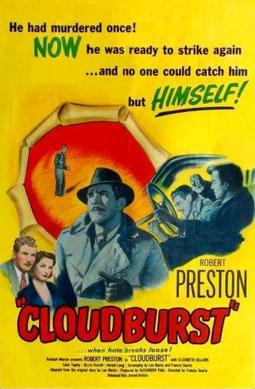
Cloudburst is a 1951 British crime drama film produced by Hammer Films, directed by Francis Searle, starring Robert Preston and featuring Elizabeth Sellars, Harold Lang, Colin Tapley and Sheila Burrell. The script is based on a play written by Leo Marks, a wartime cryptographer for the Special Operations Executive, and later the author of a memoir about his wartime work, Between Silk and Cyanide (1998).

Elizabeth Macdonald Sellars was a Scottish actress.

The Last Page, released in the United States as Man Bait, is a 1952 British film noir directed by Terence Fisher, starring George Brent, Marguerite Chapman and Diana Dors. The film was also known as Murder in Safety and Blonde Blackmail.

Ghost Ship is a 1952 British second feature thriller film directed by Vernon Sewell and starring Dermot Walsh and Hazel Court. It was written by Sewell and Philip Thornton. This was one of four attempts by Sewell to adapt and film the Pierre Mills and Celia de Vilyars Grand Guignol stage play L'Angoisse.

The Dock Brief is a 1962 black-and-white British legal satire directed by James Hill, starring Peter Sellers and Richard Attenborough, and based on the 1957 play The Dock Brief by John Mortimer.

Derby Day is a 1952 British drama film directed by Herbert Wilcox and starring Anna Neagle, Michael Wilding, Googie Withers, John McCallum, Peter Graves, Suzanne Cloutier and Gordon Harker. An ensemble piece, it portrays several characters on their way to the Derby Day races at Epsom Downs Racecourse. It was an attempt to revive the success that Neagle and Wilding had previously enjoyed on screen together. To promote the film, Wilcox arranged for Neagle to launch the film at the 1952 Epsom Derby.

The Man in the Sky is a 1957 British thriller drama film directed by Charles Chrichton and starring Jack Hawkins and Elizabeth Sellars. The screenplay was by John Eldridge and William Rose. A test pilot strives to land a stricken prototype plane.
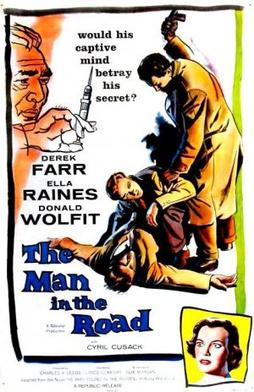
The Man in the Road is a 1956 British second feature thriller film directed by Lance Comfort and starring Derek Farr, Ella Raines, Donald Wolfit and Cyril Cusack. It was written by Guy Morgan based on the 1952 novel He Was Found in the Road by Anthony Armstrong.

Treasure Hunt is a 1952 British comedy film directed by John Paddy Carstairs and starring Martita Hunt, Jimmy Edwards, Naunton Wayne and Athene Seyler. It was written by Rita Davison and Anatole de Grunwald based on the 1949 play Treasure Hunt by Molly Keane and John Perry.
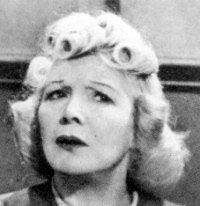
Olive Sloane was an English actress whose film career spanned over 40 years from the silent era through to her death. Sloane's career trajectory was unusual in that for most of her professional life she was essentially an anonymous bit part actress, and her best, most substantial roles did not come until relatively late in her career when she was in her 50s. Her most famous film appearance is the 1950 production Seven Days to Noon.
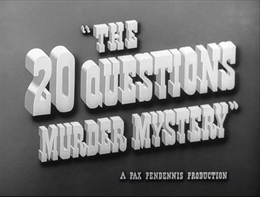
The Twenty Questions Murder Mystery, also known as Murder on the Air, is a 1950 British second feature comedy crime film directed by Paul L. Stein and starring Robert Beatty, Rona Anderson, and Clifford Evans. The screenplay was by Victor Katona and Patrick Kirwan. The film is a hybrid: the Twenty Questions sections take place in a studio recording of the BBC radio programme with the regular panellists and presenter. This is threaded into the plot as the clues trigger a series of murders, each linked to the clue.

Murder in Reverse is a 1945 British thriller film directed by Montgomery Tully and starring William Hartnell, Jimmy Hanley and Chili Bouchier. It was written by Tully based on the 1931 story Query by "Seamark".
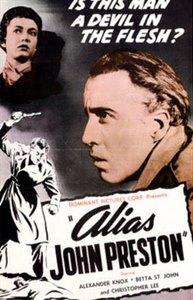
Alias John Preston is a 1955 British 'B' thriller film directed by David MacDonald and starring Christopher Lee, Betta St. John and Alexander Knox. A mysterious and wealthy man moves to a small village where he outwardly appears to be a friendly figure but nurses a dangerous secret.
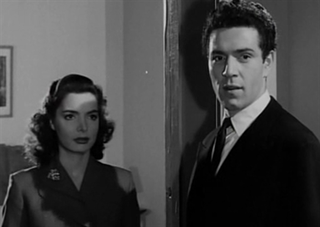
Recoil is a 1953 British 'B' crime film directed by John Gilling and starring Kieron Moore, Elizabeth Sellars and Edward Underdown.

Night Was Our Friend is a 1951 British drama film directed by Michael Anderson and starring Elizabeth Sellars, Michael Gough and Ronald Howard. The title references a line from Virgil's epic poem The Aeneid.


















